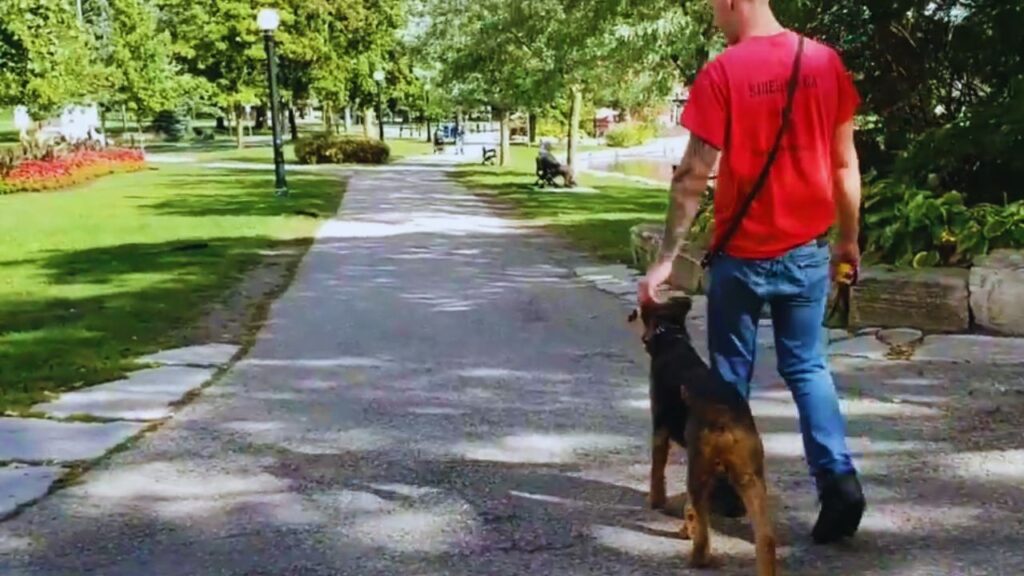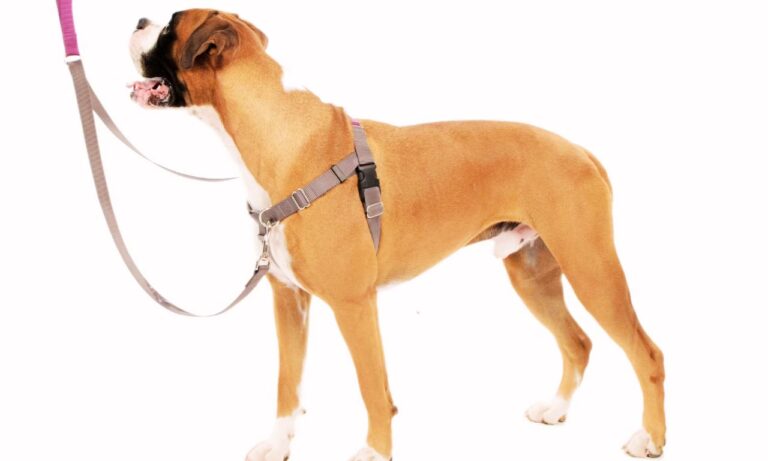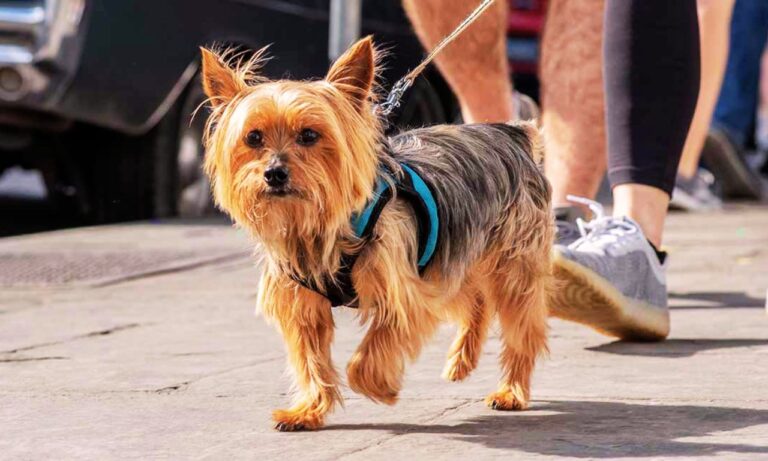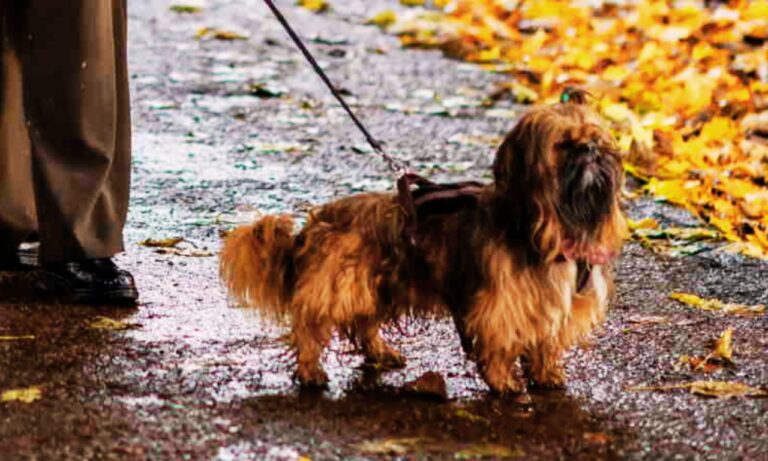Airedale Terriers, known for their intelligence, energy, and independent nature, can present challenges when it comes to off-leash activities. While it is possible for Airedales to be trained for off-leash adventures, their high prey drive and stubbornness often make it difficult to trust them fully in open environments. So, Are Airedales good off leash? For guidance on choosing the right collar size for an Airedale puppy, check out this detailed guide.
Here’s a detailed look at what you need to consider before allowing your Airedale off-leash:
Blog Highlights
ToggleWhen Can Airedales Be Off-Leash?
The best environments for an off-leash Airedale are secure areas like fenced yards or dog parks where there are minimal distractions and dangers. In these controlled environments, Airedales can enjoy running freely without the risk of running off or getting hurt.
Some owners have successfully trained their Airedales to be reliable off-leash, but it typically requires significant effort and consistent training from an early age. Learn if it’s bad to leave a dog’s collar on all the time and how to ensure your pet’s comfort.
Are Airedales Good Off Leash?
So, Are Airedales good off leash? Airedales can be challenging off-leash due to their independent and strong-willed nature. They have a high prey drive, which may lead them to chase animals or wander off. Proper training, strong recall, and consistent reinforcement are essential.

However, even with training, keeping an Airedale on a leash in unfenced areas is often recommended for safety. Discover the best collars for short-haired dogs with these 6 top recommendations.
Key Traits of Airedales
For off-leash hikes or more adventurous outings, a long leash or tracking device can provide some freedom while still ensuring safety. Devices like GPS collars can help keep track of your Airedale in case they wander out of sight. Here are some key traits of Airedales:

1. High Prey Drive
Airedales were originally bred for hunting, which means they have a strong instinct to chase smaller animals like squirrels, rabbits, and even birds. When off-leash, they are easily tempted to follow these instincts, which can lead them to run off and ignore commands. This high prey drive is a natural part of their behavior, making it risky to let them roam without a leash in areas that are not securely fenced.
2. Independent Nature
Airedales are intelligent, but they are also known for their independence and strong will. They can be stubborn, which means they may choose to ignore recall commands if they find something more interesting, such as a scent or a moving animal.

While they can be trained to respond to commands, their independent streak means that even the most well-trained Airedale may not always comply in a high-distraction environment.
3. Training for Off-Leash
Proper training is essential if you want to allow your Airedale off-leash. Early socialization and obedience training are crucial to establish good recall and listening skills. Airedales respond well to positive reinforcement, and with consistent training, you can teach them basic commands like “come” and “stay” effectively.

However, even with training, it is important to remember that their natural instincts may take over in certain situations. Understand if the Cane Corso is a high-maintenance dog with this insightful guide.
Training for off-leash should begin in a secure, fenced area, gradually increasing the freedom as the dog shows reliability in returning when called. Obedience classes and recall training can help strengthen these skills, but you must remain cautious, as their stubbornness can still pose a challenge.
4. Potential Dangers
Letting an Airedale off-leash in an unfenced area can lead to several dangers. Their tendency to wander can result in them running into traffic, getting lost, or encountering other animals that may pose a threat. Without a secure environment, the risks are significantly higher, especially in areas with wildlife that may trigger their prey drive.
How to Train an Airedale for Off-Leash Success
Training an Airedale Terrier to be reliable off-leash is a long-term commitment that requires patience, consistency, and early socialization. Due to their strong will and high energy, training must start from a young age, ideally as soon as your Airedale puppy comes home. Here’s a step-by-step approach to making your Airedale off-leash ready:

1. Start with Basic Commands
The foundation of off-leash training starts with teaching your Airedale the basic commands such as “sit,” “stay,” “come,” and “heel.” These are non-negotiable commands that must be mastered before considering off-leash activities.
Positive reinforcement, like treats and praise, works well for this intelligent but stubborn breed. Make sure to practice these commands in a variety of settings to ensure your dog can follow them even when distracted.
2. Build a Strong Recall
Recall is one of the most important skills for an off-leash dog, especially for Airedales who are easily distracted by moving animals or interesting smells. Start by practicing recall in a fenced yard or on a long leash.
Use high-value treats and lots of enthusiasm when calling your dog back to you. Make recall fun and rewarding so your Airedale associates it with good things. Gradually increase the distance and distractions as your dog improves.
3. Socialization
Socializing your Airedale from an early age is crucial. Expose your dog to different environments, people, and animals to help reduce their prey drive and ensure they are calm and confident around new stimuli. Well-socialized Airedales are less likely to be overwhelmed by distractions in off-leash settings, which makes recall training more effective.
4. Use of a Long Leash or Training Line
Before allowing full off-leash freedom, consider using a long training leash or line. This allows your Airedale the feeling of freedom while still giving you control. Practice recall, obedience commands, and impulse control with the training line, and only consider off-leash once your dog consistently listens in this controlled environment.
Challenges of Off-Leash Training for Airedales
Training an Airedale for off-leash activities isn’t without challenges. Their natural traits—prey drive, independence, and stubbornness—make it difficult to guarantee that they will always obey commands. Even the most well-trained Airedale can become distracted and decide to chase after something, ignoring your calls.
1. Dealing with Prey Drive
Airedales have a strong prey drive due to their origins as hunting dogs. They were bred to chase and hunt small animals, which can make off-leash reliability difficult. Training your Airedale to focus on you despite distractions is key.
Use high-reward treats during training sessions, but understand that there may still be situations where their instincts overpower training. In these cases, it’s safest to keep them on a leash or within a fenced area.
2. Handling Stubbornness and Independence
Airedales are known for their independent streak. While they are intelligent and capable of learning commands quickly, they don’t always feel like obeying. This can become especially problematic off-leash when they are far away and distracted.
Off-leash success with an Airedale requires consistent reinforcement of commands and a strong bond between dog and owner. Explore the Cane Corso growth and weight chart and nutrition plans.
How to Safely Manage an Airedale Off-Leash?
While Airedales may not naturally be the best candidates for off-leash activities, there are strategies to safely manage their freedom in controlled environments. Here are some practical tips:
1. Use Enclosed Spaces:
The safest way to allow your Airedale off-leash is in a fully enclosed space such as a fenced backyard or dog park. This gives your dog room to explore without the risk of them running off or getting into dangerous situations. In these areas, you can gradually introduce off-leash activities while maintaining a watchful eye.
2. Practice Recall Training:
The most important command for any dog, especially one that you plan to let off-leash, is recall. Start by practicing in low-distraction environments with treats and positive reinforcement.
Gradually increase the difficulty by introducing more distractions such as other dogs or wildlife. The key is consistency—reward your Airedale every time they come when called, even if it takes a bit longer than you’d like.
3. Use a Long Leash:
If you’re not confident in your Airedale’s recall abilities, consider using a long leash. This gives them the freedom to roam and explore without fully relinquishing control. Long leashes are particularly helpful during hikes or walks in open areas where there is a greater chance of distractions, such as wildlife.
4. Invest in a GPS Collar:
Technology can be a game-changer for off-leash Airedale owners. GPS collars allow you to track your dog in real-time, ensuring that you can find them if they decide to wander off. These collars can also notify you if your dog leaves a designated area, providing extra peace of mind during off-leash activities.
5. Regular Exercise and Mental Stimulation:
An Airedale that is well-exercised and mentally stimulated is less likely to exhibit problematic behaviors, such as wandering or ignoring commands. Make sure your Airedale gets plenty of physical activity, whether it’s through daily walks, agility training, or off-leash play in a secure area. Mental stimulation is equally important; consider puzzle toys, obedience training, or games like hide-and-seek to keep their minds sharp.
Conclusion: Should You Let Your Airedale Off-Leash?
Airedales can potentially enjoy off-leash freedom, but it requires careful consideration, extensive training, and the right environment. Due to their prey drive, independent nature, and potential for wandering, it’s often safest to keep them on a leash unless in a securely enclosed space.
If you plan to allow your Airedale off-leash, start with consistent training in a controlled environment and always be mindful of their natural instincts. Hope so, now you know the answer: Are Airedales good off leash? Find out the best collars for Cane Corsos to suit their unique needs.





